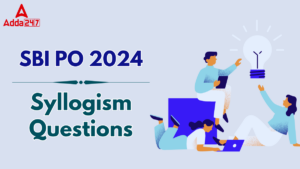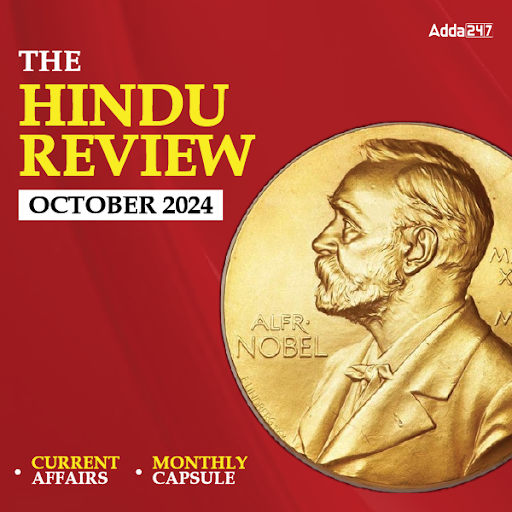Dear Readers,
As we all know SBI PO is here and we are here to help you by providing daily night class quizzes on new pattern questions with different topics that will help you to go through this exam. So, here we are with some tough New Pattern questions of reasoning.

Directions (Q1-5) Study the given information carefully to answer the following questions:
Ten persons are sitting in two parallel rows containing five persons each. In row 1, A, B, C, D and E are sitting and all of them are facing south. In row 2, P, Q, R, S and T are sitting and all of them are facing north. In the given seating arrangement, each member seated in a row faces another member of the other row.
Moreover, each of them belongs to different countries – Australia, Brazil, Bulgaria, Belgium, Japan, India, Romania, Indonesia, Iran and Russia but not necessarily in the same order.
There are only two persons sitting between the Australian, who sits at an extreme end, and E. P, who sits in the middle of the row, is not an immediate neighbor of Q, who is not a Russian. T is sitting at an extreme end. E, a Japanese, sits on the immediate right of the person from Brazil and faces the immediate neighhour of Q. B is not sitting at the extreme left end. P is not from Iran. There is only one person between C and D, who is from Australia. S, an Indian, is an immediate neighbour of the Russian and does not face the person from Bulgaria. R, who is from Belgium, is an immediate neighbour of the person from Iran, who in turn faces the immediate neighbour of the Japanese. There are two persons between the Romanian and the Bulgarian. B is not from Romania. T is not from Indonesia.
Q1. A belongs to which of the following countries?
(a) Indonesia
(b) Romania
(c) Bulgaria
(d) None of these
(e) Can’t be determined
Q2. Who is from Indonesia?
(a) R
(b) B
(c) T
(d) P
(e) Can’t be determined
Q3. ‘Australia’ is related to ‘Romania’ in a certain way, based on their seating positions. Then who is Russia related to, following the same seating positions?
(a) Indonesia
(b) Iran
(c) Brazil
(d) India
(e) Belgium
Q4. Four of the following five are alike in a certain way based on their seating positions and so form a group. Which of the following is different from the group?
(a) Japan
(b) Romania
(c) Russia
(d) Belgium
(e) India
Q5. Which of the following statements is/are definitely false?
(a) B is from Bulgaria.
(b) There are two persons sitting between the Indian and the person from Iran.
(c) The Brazilian faces the person from Indonesia.
(d) The person who is from Iran sits opposite the Australian.
(e) All of the above are true
Directions (6-10): In the following questions, four Conclusions is given and five statements are given as (a), (b), (c), (d) and (e). From this you have to take the statements to be true even if they seem to be at variance with commonly known facts and then
decide which of the given statement logically follows.
Q6. Conclusions:
Some desks are pencils is a possibility
Some mountains are jungles
Some mountains are desks
Some jungles are kites.
(a) Statements: All pencils are kites. No kites are desks. All desks are jungles. All jungles are mountains
(b) Statements: No pencils are kites. No kites are desks. All desks are jungles. All jungles are mountains
(c) Statements: Some pencils are kites. Some kites are desks. All desks are jungles. All jungles are mountains
(d) Statements: Some pencils are kites. Some kites are desks. No desks are jungles. No jungles are mountains
(e) Statements: Some pencils are kites. Some kites are desks. Some desks are jungles. Some jungles are mountains
Q7. Conclusions:
Some roads are boards
Some boards are papers is a possibility
Some roads are clips is a possibility
Some roads are lanes
(a) Statements: No papers are clips. Some clips are boards. Some boards are lanes. No lanes are roads
(b) Statements: All papers are clips. All clips are boards. No boards are lanes. All lanes are roads
(c) Statements: Some papers are clips. No clips are boards. No boards are lanes. Some lanes are roads
(d) Statements: No papers are clips. Some clips are not boards. Some boards are not lanes. All lanes are roads
(e) Statements: All papers are clips. Some clips are boards. All boards are lanes. All lanes are roads.
Q8. Conclusions:
Some buses are tyres
Some tyres are pens is a possibility
Some buses are wheels
Some clocks are wheels
(a) Statements: All pens are clocks. Some clocks are tyres. All tyres are wheels. All wheels are buses
(b) Statements: Some pens are clocks. Some clocks are tyres. All tyres are wheels. No wheels are buses
(c) Statements: All pens are clocks. Some clocks are tyres. All tyres are not wheels. No wheels are buses
(d) Statements: No pens are clocks. Some clocks are tyres. No tyres are wheels. All wheels are buses
(e) Statements: All pens are clocks. All clocks are tyres. No tyres are wheels. No wheels are buses
Q9. Conclusions:
Some windows are rings
No stone is a ring
Some windows are doors
Some doors are rings
(a) Statements: Some stones are hammers. Some hammer is a ring. Some rings are doors. All doors are windows
(b) Statements: All stones are hammers. No hammer is a ring. Some rings are doors. All doors are windows
(c) Statements: All stones are hammers. No hammer is a ring. No rings are doors. No doors are windows
(d) Statements: All stones are hammers. All hammer is a ring. Some rings are doors. All doors are windows
(e) Statements: Some stones are hammers. No hammer is a ring. Some rings are doors. All doors are windows
Q10. Conclusions:
Some sticks are store is a possibility
Some chains are baskets
Some chains are sticks
All stores are sticks is a possibility
(a) Statements: Some stores are baskets. Some baskets are sticks. Some sticks are chains.
(b) Statements: All stores are baskets. Some baskets are not sticks. Some sticks are chains
(c) Statements: No stores are baskets. All baskets are sticks. All sticks are chains
(d) Statements: All stores are baskets. Some baskets are sticks. Some sticks are chains
(e) Statements: All stores are baskets. No baskets are sticks. All sticks are chains
Directions (11-15): Study the following information carefully and answer the given questions
In a certain code language
“The World Bank report “is written as “%R18, &K05, #S16, !Q14.
“This institution had founded “is written as “$D04, *Q19, %R21, @K09.
“From just telling consumers “is written as “#R14, !H12, &U15, %X19.
“His good qualities include “is written as “*Q03, $X01, #R15, !L19.
Q11. What is the code for ‘telling’ in the given code language?
(a) %X19
(b) &U15
(c) #R14
(d) *019
(e) !H12
Q12. What is the code for ‘good bank’ in the given code language?
(a) #R15, !Q14
(b) &K05, #R15
(c) %R18, *Q03
(d) !L19, !Q14
(e) #S16, $X01
Q13. What may be the possible word for `*Q03, #E15, #R14′ in the given code language?
(a) report telling good
(b) qualities from report
(c) include consumers report
(d) the good consumers
(e) None of the above
Q14. What may be the possible code for ‘institution hiring’ in the given code language?
(a) %R21, #012
(b) *Q19, %L18
(c) @K09, *N09
(d) $D04, @K17
(e) %R21, $J21
Q15. What is the code for ‘from world’ in the given code language?
(a) #R14, %R18
(b) #S16, %X19
(c) !Q14, &U15
(d) &U15, %R18
(e) &K05, !H12




 The Hindu Review October 2022: Download ...
The Hindu Review October 2022: Download ...
 Syllogism Questions for SBI PO Exam
Syllogism Questions for SBI PO Exam
 What is Section A and Section B in IBPS ...
What is Section A and Section B in IBPS ...




